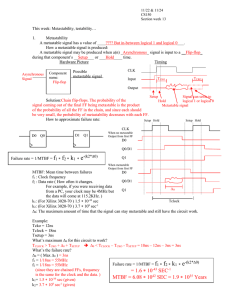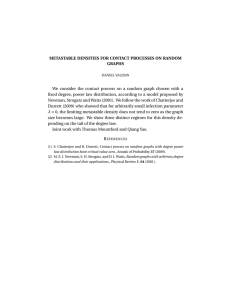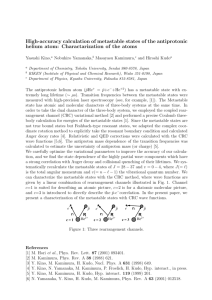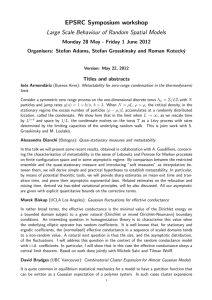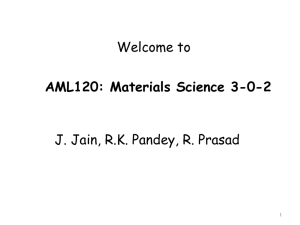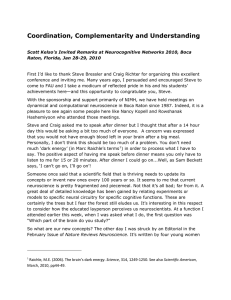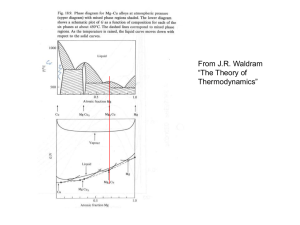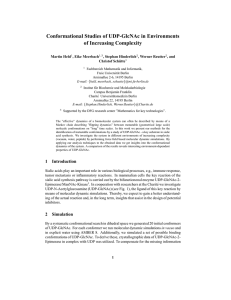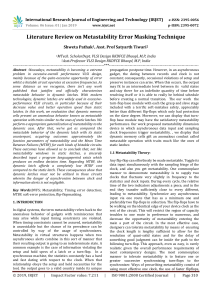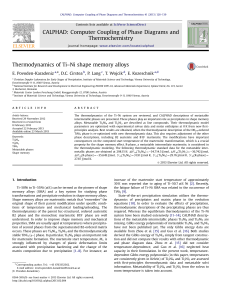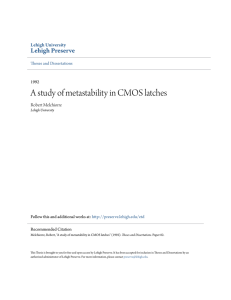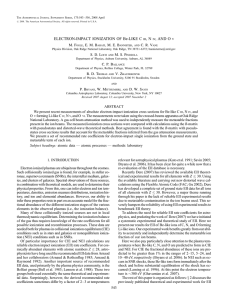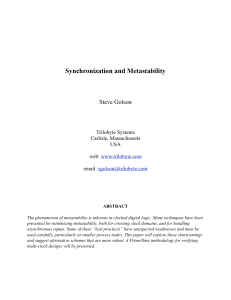Week13b Section.doc
advertisement
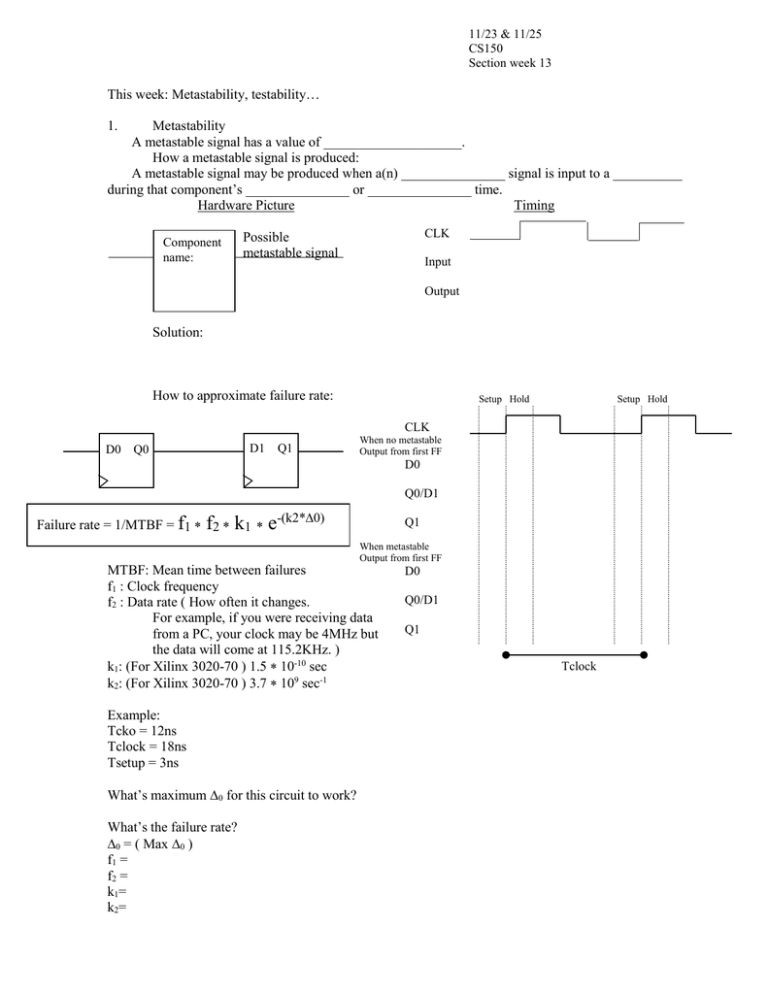
11/23 & 11/25 CS150 Section week 13 This week: Metastability, testability… 1. Metastability A metastable signal has a value of ____________________. How a metastable signal is produced: A metastable signal may be produced when a(n) _______________ signal is input to a __________ during that component’s _______________ or _______________ time. Hardware Picture Timing CLK Possible metastable signal Component name: Input Output Solution: How to approximate failure rate: Setup Hold Setup Hold CLK D0 D1 Q0 Q1 When no metastable Output from first FF D0 Q0/D1 Failure rate = 1/MTBF = f1 f2 k1 e-(k2*0) Q1 When metastable Output from first FF MTBF: Mean time between failures f1 : Clock frequency f2 : Data rate ( How often it changes. For example, if you were receiving data from a PC, your clock may be 4MHz but the data will come at 115.2KHz. ) k1: (For Xilinx 3020-70 ) 1.5 10-10 sec k2: (For Xilinx 3020-70 ) 3.7 109 sec-1 Example: Tcko = 12ns Tclock = 18ns Tsetup = 3ns What’s maximum 0 for this circuit to work? What’s the failure rate? 0 = ( Max 0 ) f1 = f2 = k1= k2= D0 Q0/D1 Q1 Tclock 2. Testability A SA0 ( stuck at 0 ) fault means: A SA1 ( stuck at 1 ) fault means: Exhaustive testing: A B OUT C When (might) exhaustive testing be impossible? 3. K-maps Difference between hazards and glitches. Static 1 hazards, static 0 hazards. Don’t cares: Making K-maps. ABCD 0000 0001 0010 0011 0100 0101 0110 0111 1000 1001 1010 1011 1100 1101 1110 1111 OUT 1 0 1 1 0 0 1 X 1 0 1 0 0 X 1 X AB CD 00 01 11 10 00 01 11 10
